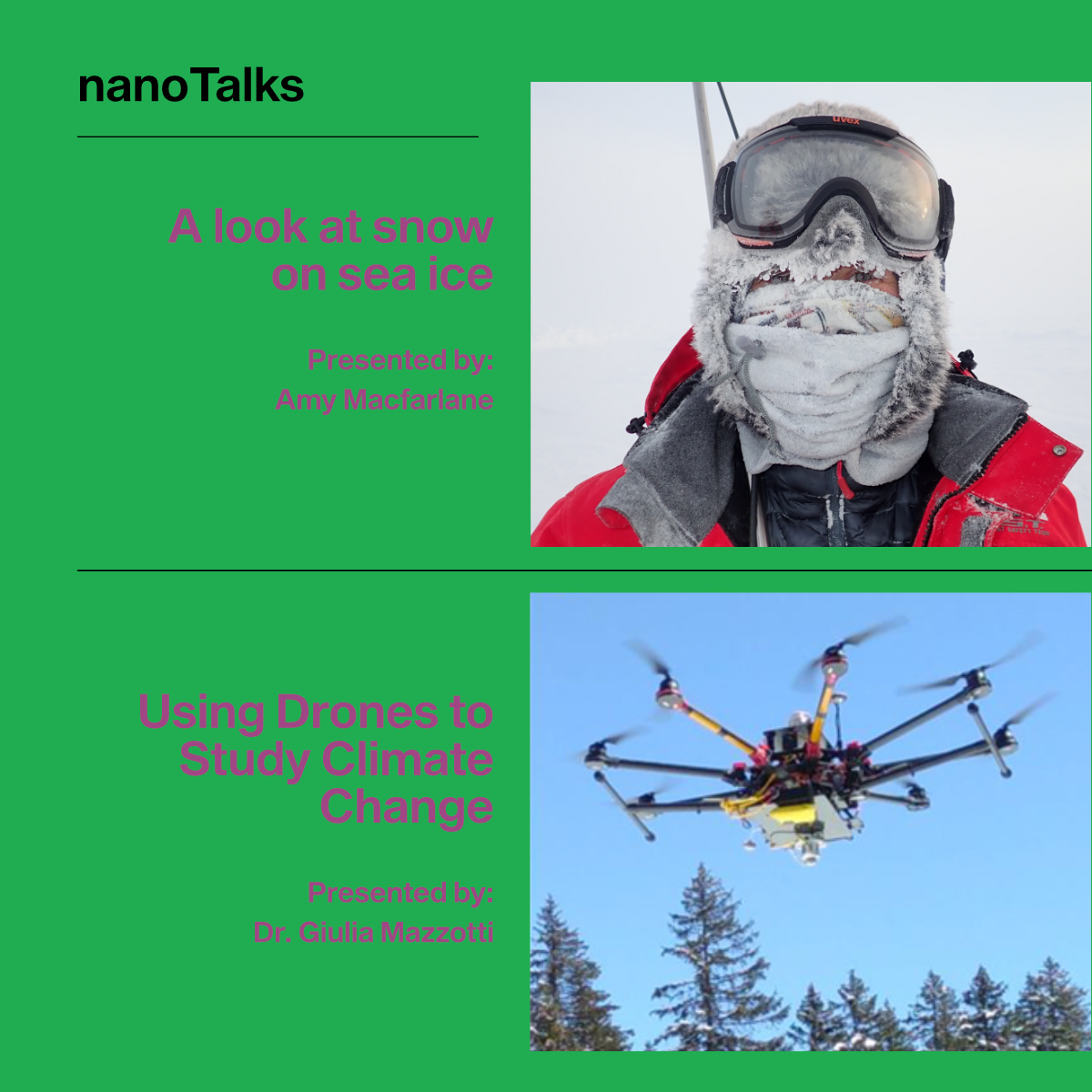
January nanoTalks: Snow & Climate Change
Lead
28.01.2021
YouTube Live Stream: www.bit.ly/nano-jan
Free

Free
Speaker 1: A look at snow on sea ice
Amy Macfarlane, PhD Candidate at the WSL Institute for Snow and Avalanche Research SLF, Switzerland
Snow on Arctic sea ice is a crucial component in the formation and decay of sea ice, and directly affects heat exchange between the atmosphere and the ocean. We had the unique opportunity to measure the annual formation and decay of the snowpack during MOSAiC. Thanks to the drifting icebreaker R/V Polarstern, we could install a micro-computed tomograph (microCT) on board and measure the snow microstructure of samples that were transported in an undisturbed state. First measurements show differences in the snow on one year-old sea ice compared to snow on multiple year-old sea ice. As the ice in the Arctic is becoming younger and younger this is an important step to understanding the processes occurring in such a quickly changing and remote area of the world.
Speaker 2: Using Drones to Study Climate Change
Dr. Giulia Mazzotti, PostDoc at the WSL Institute for Snow and Avalanche Research SLF, Switzerland
High-latitude regions are experiencing rapid warming and, consequently, declining snow cover extents and duration.The impacts of these changes on ecosystem processes, hydrological regimes, permafrost thawing, and climate change itself, are potentially large but still poorly quantified. Drastically transformed high-latitude biomes will demand considerable adapta- tions from humans that live in and rely on these environments. Climate change projections aimed at predicting the consequences of rising temperatures are based on global-scale models, but the driving mechanisms of change can only be understood by examining small-scale environmental processes. Commercial drones equipped with a variety of sensors allow for detailed measurements over large areas, thus offering exciting new opportunities to study such processes and improve climate models. This nanotalk will outline the design of a drone system for land surface reflectivity (or ‘albedo’) surveys which was used to investigate the snow albedo feedback over boreal forests, a major uncertainty in current climate simulations.
Snow on Arctic sea ice is a crucial component in the formation and decay of sea ice, and directly affects heat exchange between the atmosphere and the ocean. We had the unique opportunity to measure the annual formation and decay of the snowpack during MOSAiC. Thanks to the drifting icebreaker R/V Polarstern, we could install a micro-computed tomograph (microCT) on board and measure the snow microstructure of samples that were transported in an undisturbed state. First measurements show differences in the snow on one year-old sea ice compared to snow on multiple year-old sea ice. As the ice in the Arctic is becoming younger and younger this is an important step to understanding the processes occurring in such a quickly changing and remote area of the world.
Speaker 2: Using Drones to Study Climate Change
Dr. Giulia Mazzotti, PostDoc at the WSL Institute for Snow and Avalanche Research SLF, Switzerland
High-latitude regions are experiencing rapid warming and, consequently, declining snow cover extents and duration.The impacts of these changes on ecosystem processes, hydrological regimes, permafrost thawing, and climate change itself, are potentially large but still poorly quantified. Drastically transformed high-latitude biomes will demand considerable adaptations from humans that live in and rely on these environments. Climate change projections aimed at predicting the consequences of rising temperatures are based on global-scale models, but the driving mechanisms of change can only be understood by examining small-scale environmental processes. Commercial drones equipped with a variety of sensors allow for detailed measurements over large areas, thus offering exciting new opportunities to study such processes and improve climate models. This nanotalk will outline the design of a drone system for land surface reflectivity (or ‘albedo’) surveys which was used to investigate the snow albedo feedback over boreal forests, a major uncertainty in current climate simulations.
